-
 Ready to Curl up on the Couch with Pickles or Ice Cream and a Good Book? 10 Books on Pregnancy You Should Read When Expecting (2020)
Ready to Curl up on the Couch with Pickles or Ice Cream and a Good Book? 10 Books on Pregnancy You Should Read When Expecting (2020)
-
 क्या आप अपनी गर्भावस्था के दौरान पढ़ने के लिए कोई भी किताब उठा ली हैं(2020)?10 सबसे ज्यादा फायदेमंद किताबों का वर्णन जो गर्भावस्था के दौरान पढ़ने लायक है।
क्या आप अपनी गर्भावस्था के दौरान पढ़ने के लिए कोई भी किताब उठा ली हैं(2020)?10 सबसे ज्यादा फायदेमंद किताबों का वर्णन जो गर्भावस्था के दौरान पढ़ने लायक है।
-
 Turn Your Guests into Puddles of Mush with the 10 Cutest Return Gifts for Baby Shower
Turn Your Guests into Puddles of Mush with the 10 Cutest Return Gifts for Baby Shower
When to Start Your Workout after a C-Section?
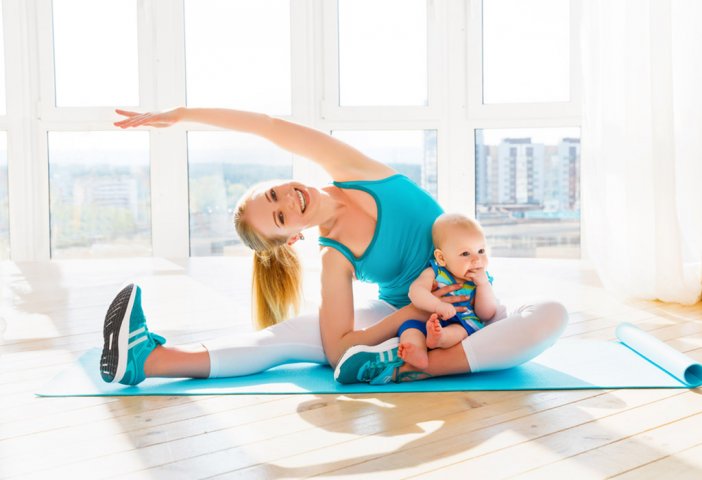
Cesarean or C-section, as we call it is on the rise. A considerable percentage of all the deliveries are c-sections. It can be both planned and unplanned. Whatever the case is, remember that it is a major abdominal and pelvic surgery. Your body needs considerable time to recover and get moving.
New mothers are usually ready to lose the weight they had gained during pregnancy. But it is not as simple as that. C-section being a major surgery needs to be treated as such, and care should be taken to let the body, heal. Furthermore, there is the recovery period after that.
The First Six Weeks
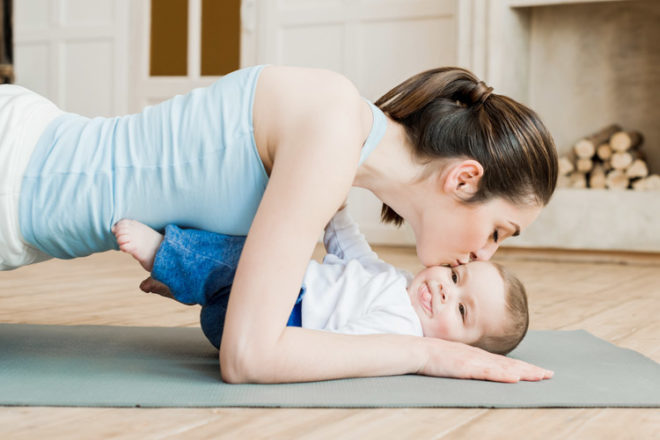
In the first few weeks, you would have a discharge called lochia which is a mixture of blood, mucus and tissue. In the first 1-2 weeks, you would bleed heavily. Though it subsides, you might still experience light bleeding for up to 6 weeks.
Focus on spending time with your baby and give your body time to heal. Start mild walks, maybe 1500 steps, not much. If you are still ready to get moving, check for rectus diastasis. It is the separation of your abdominal muscles during pregnancy. Your growing belly puts pressure on the muscles causing them to separate. Any over 2.5 cm, consult a doctor before starting exercises of any kind. Else you can begin with simple restorative/breathing exercises, keeping in mind that your body went through a trauma and needs time to recover.
The First Three Month
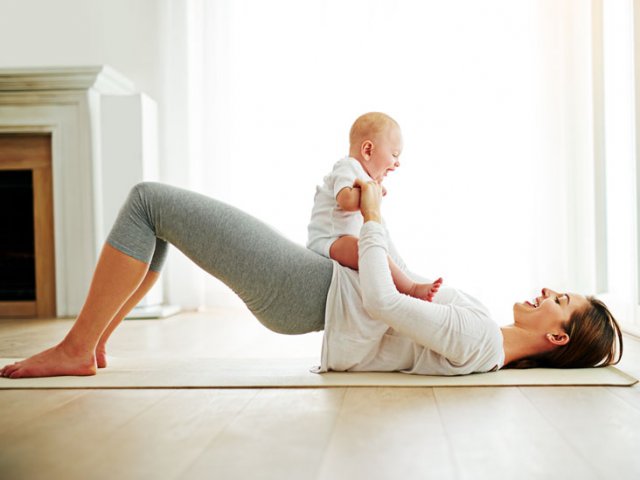
After 6 weeks and once the doctor clears, you can start exercises on strengthening your core muscles. Then start on exercises aimed at reducing your bulging tummy. You can also brisk walk, cycle and swim to tone your muscles. They also help shed the baby weight.
Increase the intensity of the exercises slowly, allowing your body to get used to the workouts. The speed with which you move through the exercises depends on your fitness level prior to pregnancy. Depending on your core strength include clamshell, glute bridge and side-lying knee abduction in your routine.
As for strength workouts, start with sessions of 15 minutes each and work upwards. Use bodyweight, resistance bands and light hand weights. Make sure your exercises are of a beneficial nature like squats, side planks, split squats, inverted row to name a few.
What Not to Do?
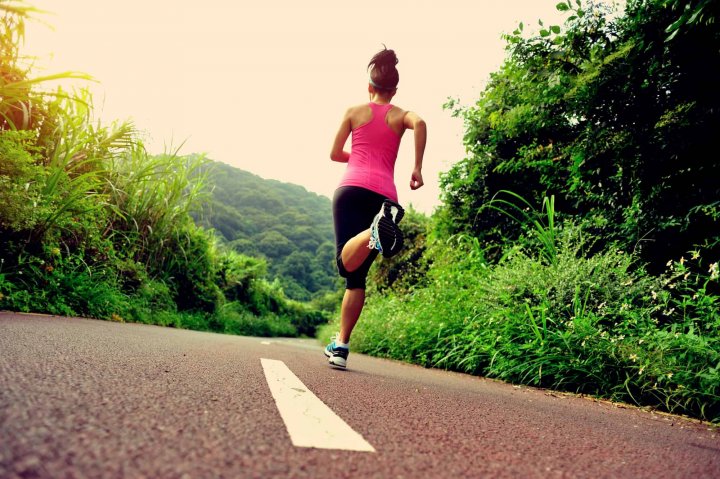
The pregnancy hormones affect the joints of a mother, so avoid high impact exercises involving jumping and running for up to 6 months. The same goes for frontal planks, crunches, bicycles and situps as they put unnecessary pressure on your abdominal wall. Also, avoid Zumba, kickboxing, overhead presses, heavyweights and step-ups. Any exercises that put downward pressure on your pelvic floor like a barbell back squat should be avoided. Remember, no pressure on your c-section scar.
Listen to your body and keep going as long as you feel safe and invigorated. Anytime you feel like it's excessive, take a step back. Healing and working steadily towards strengthening is more important than bouncing back to your pre-pregnancy self.
Restorative Exercises
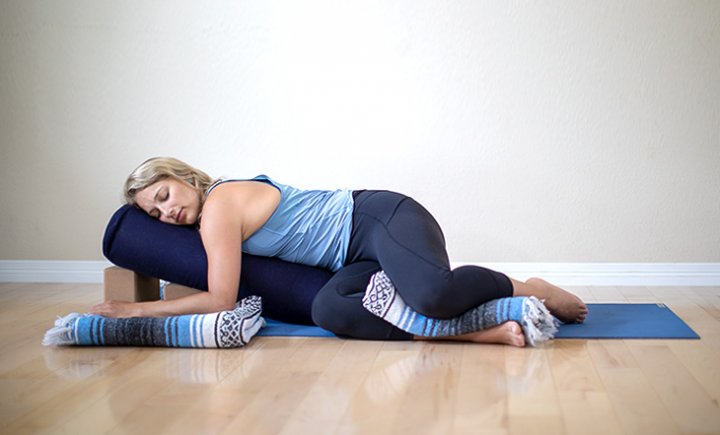
In the early stages of pregnancy, you’d be resting and enjoying time with your baby more than anything else. However, it is also imperative that you follow a few restorative exercises, mostly to help you in the recovery. Anytime you feel pain at the incision site, stop immediately. Don't push yourself.
Belly Breathing
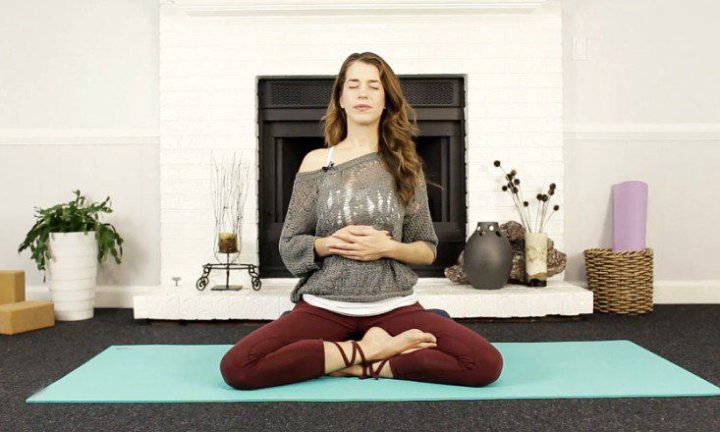
Belly breathing or restorative breathing is key to your core restoration. You’d be reprogramming your core to work together. In the early days after your surgery, practise belly breathing from the reclining position. And as you grow stronger, do it sitting up.
Inhale deeply through your nose and focus on your breathing. Observe your rib cage and pelvic floor muscles gently expand. It helps to place your hand on your belly to feel it expand. Then relax and breathe out slowly through your mouth, drawing your navel to your spine. The gentle contraction activates the pelvic floor and deep abdominal muscles.
Seated Kegels

Assuming that you have been practising your pelvic floor exercises throughout your pregnancy it is wise that you continue the same. The pelvic floor is the connective tissue of muscles that connect the abdominal walls to the pelvic. Kegels are one of the best exercises to strengthen your pelvic floor. They help reduce incontinence following childbirth.
Sit on the edge of a chair with your feet planted firmly on the floor. Contract your pelvic floor as if to hold back your urine flow. Hold the contraction as long as possible. Start with 5 seconds, and keep working towards increasing your timing. Before relaxing the contraction, take a deep breath and release it on your exhale. Take a break of 2 breaths in every contraction.
Leg Slides
Leg slides are the best way to strengthen the transverse abdominal muscle that supports your core. It gently kickstarts the core stabilization.
Lie down on a flat surface. If possible, go down on the floor. Keep your knees bent and your foot flat on the floor. Wear socks or place a towel underneath your foot. Inhale deeply and as you exhale extend the legs to the floor. Engage your core by pulling in your navel to your spine. To start with, repeat this on each leg separately. Work your way towards performing the same with your legs together.
Wall Sit

A full-body workout that engages the core and gets all the muscle groups to work in unison. It might not seem like much, considering it is an isometric exercise, but don't underestimate the impact.
Stand with your back to the wall about 1-2 ft away. Lean against the wall and lower yourself to a sitting position as if there is an imaginary chair. Your thighs and legs should be at 90° to one another. Engage your core and breathe deeply. Stay as long as you can and lift with control. Rest one minute between each exercise.
Clam Shell
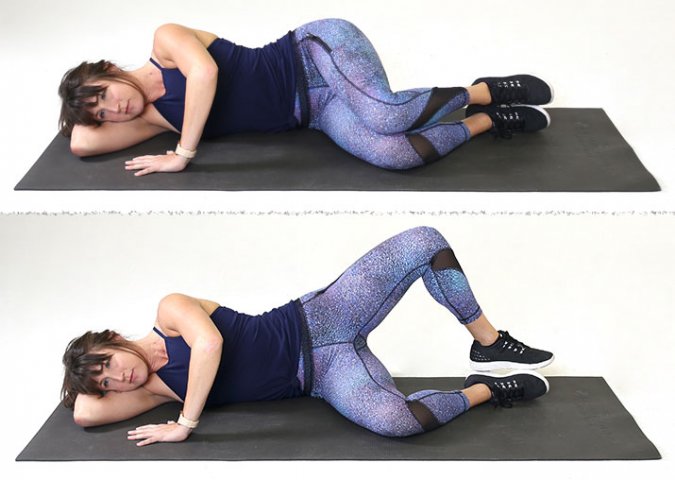
A hip strengthening exercise that works well on your hips and legs and is also mild and restorative. While strengthening your hips, it also activates the pelvic floor and tones your glutes.
Lie on one side of your body with your legs stacked. Your legs should be at 90° almost in a fetal position. Support your head with your hand and plant the other on the ground for support. Engage your core and raise your top leg away with the feet firmly together. Squeeze your glutes at the top, and bring back to the normal position. Repeat the same for the other side.
Exercises for After C-Section

While you are desperate to lose weight and return to normal life remember your body went through a trauma nestling your child. Be patient and let it recuperate. Check-in with your doctor before commencing your exercise regimen.
Side Plank

Planks, though not much loved are essential for a strong core. While you cannot do a full-frontal plank just yet, the modified side plank is your best option. An effective, properly performed side plank can help you heal your diastasis.
Get down on your side, with the knees stacked one above the other. Your elbows should be below your shoulder joint. Lift your hips, so that your body is a straight line. Keep your shoulders and neck relaxed. Control your muscles and retain your core engagement throughout. Maintain the pose so long as you are comfortable. When you are exhausted or in pain come down slowly with control.
Squats

If there is one exercise you do after your pregnancy let it be a squat. Squats strengthen your leg and pelvic floor muscles. Not only does it maintain core stability, but it also works on your hip mobility.
Stand with your feet shoulder-width apart, with your toes pointed away from each other. Bend your knees and go down as if sitting on an imaginary chair. Keep your spine straight. Your feet would track outwards a little but should remain planted on the ground. Maintain core engagement and control your squat down and back up.
For the first few squats do not go all the way down. If you are not ready for a full squat, start with a supported squat i.e hold on to something as you squat. You can also use a chair; Just sit, and stand back up again.
Split Squats

Split squats are a better alternative to your traditional lunge and can be performed postpartum. But never doubt its efficiency. Apart from working on your core, it also strengthens your leg muscles.
In a standing position, take one leg forward as far as it can go with your back foot planted down, and your toes point forward. Your spine is straight with your hand on your hips. Bend your knees as you come down until they are at 90° and your back heel is lifted. Stand back by pushing in your front foot, and placing your back heels down. As usual, hold your core engaged.
Band Pull-Aparts
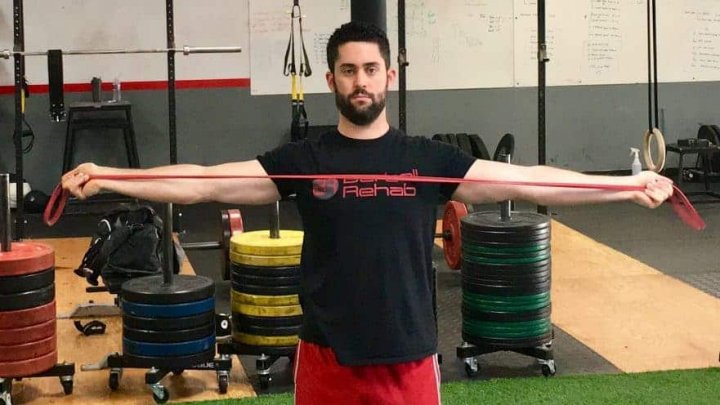
An exercise that can look deceptively easy until you take a resistance band in hand. It is often credited for strengthening the shoulder and upper back, but it has a positive effect on the transverse abdominal too.
Stand tall holding the resistance bands in both your hands. Where you place the hands depend on how much tension you want to exert. Placing the hands closer in the resistance bands exert much more tension than when apart. Maintain a straight spine and avoid lower back arch. Take a deep breath; On the exhale, pull the band as much as your hands can go; Maintain the tension for a few seconds and release slowly.
TRX Inverted Row

TRX inverted row though not as popular as its more famous alternatives is perfect for a good posture. It also works on your back muscles and your arms to an extent. And all you need is a TRX Cable.
Hang your cable high and secure. Hold the cables and walk backwards until you feel a tension in the cable. Hang from the cable at this point. You can either plant your foot down or stay on your heels with the toes lifted. With your arms straight, pull your body up. Make sure your spine is straight and your elbow doesn't go behind your body at any point.
Flatten That Tummy
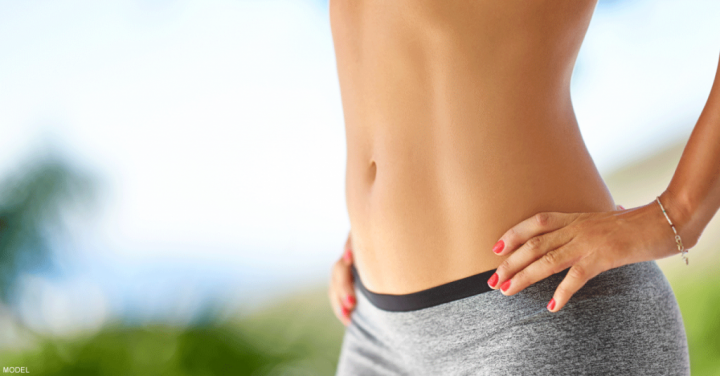
Now for the most important part! How quickly can we flatten that tummy? Not so fast; You nurtured your baby for about 9 months, so give it time to get back to pre-pregnancy. However, these exercises might help you start working on your abs.
The Bridge
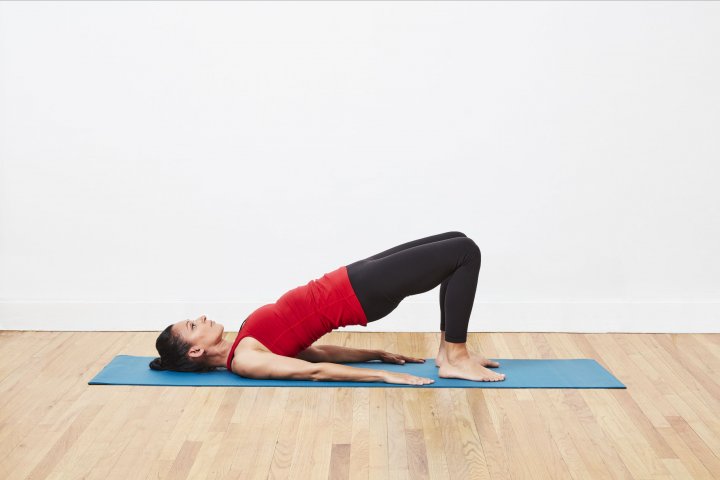
Bridge or otherwise called as the Glute Bridge is excellent for your core stabilization and pelvic floor. It also strengthens your glutes, hamstrings and abdominal muscles.
Lie flat on the floor, with your knees up and heels flat. Press the heels and lift your hips upwards; Just as much as you can go. Your upper back and shoulders should be on the ground. Make sure that your body is in a straight line. Your spine, being straight, and creating length is more important than how higher you can reach. Maintain the pose as long as you are comfortable.
The Tabletop

Tabletop is another that helps you stabilize your core and correct your posture.
Start by getting down on your hand and knees. Your hands should be below your shoulders and facing each other. Your thighs are straight and hips above your knees. Bend your elbows a little and move forwards so that your breasts come over your hands. Hold the position as long as you can. Work towards increasing the timing.
Slide-Leg Glides
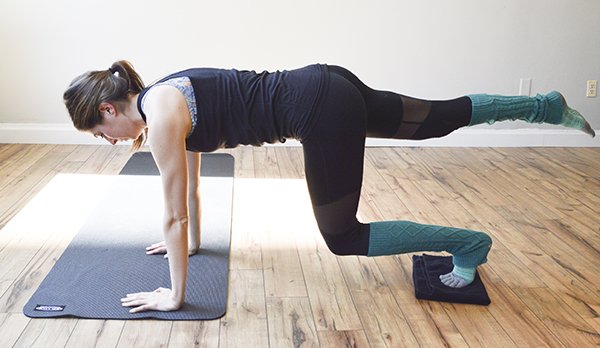
An exercise that works the leg muscles stabilizes the core, and strengthens your pelvis all at the same time is just what you need as the slide leg glides.
Stretch on the floor on one side with your legs stacked. Bend your knees at 90°; Rest one hand below your head for support. Plant your other hand just by your stomach for support. Lift the top leg, hip-high and stretch it. Glide it forward and bring it back in line with your body. Repeat the same sequence for the other side.
Knee Touchdowns
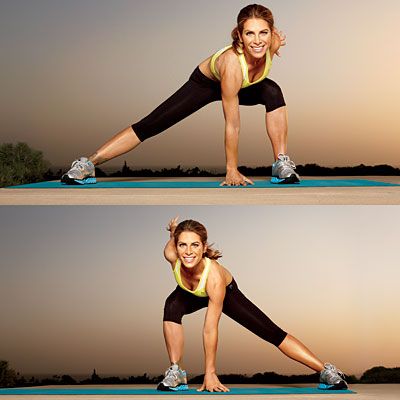
Similar to slide leg glides, the knee touchdowns also work your legs along with stabilizing your core and pelvic floor.
Similar to the previous exercise. Lay on one side of the body with your knees stacked at 90°. Lift the top leg, high above your hip and bring it forward, touching your knee down. Take it back to be in line with your body and repeat.
Sphinx Pose
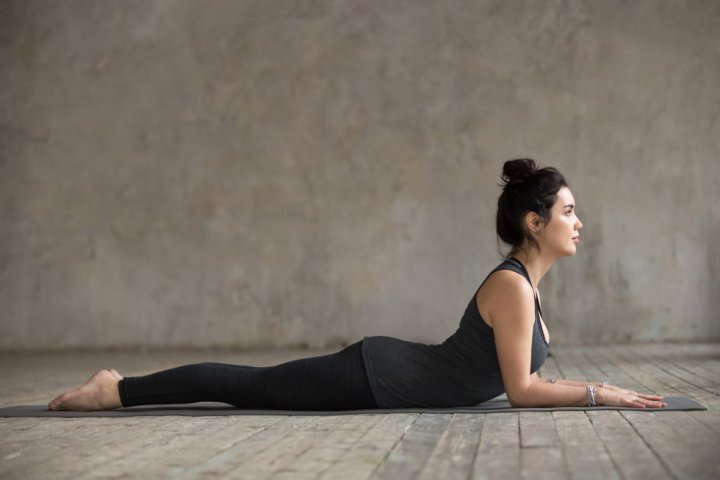
The Sphinx, also called cobra pose, is a great way to stretch your abs and give it a chance to reset. Do it towards the end of the workout.
Lie face down with your chin resting on the floor. Your hands should be by your shoulders or ribcage. Breathe deeply. On the inhale, rise through your mid-back with elbows bent. Make sure you are not straining your shoulders and they are not bunched near the ears. Push your shoulders down and relax into the pose. Come down on the exhale and repeat.
Coping with Your Emotions After a C-Section

Birth, in itself, is something that takes time to process. It takes time to come into terms with the changes and the new normalcy. If it's a c-section, you might now be able to handle the emotions as quickly. Talk about it with the doctor or someone you trust. Talking helps.
What is Normal?

A woman’s body image takes a beating after childbirth, however confident she is. It takes time to accept the changes in your body. In the case of a c-section, the scar, in itself, might be traumatic for you. Remember you are not alone, and it is natural to feel upset about it.
And then there is society’s expectation of what birth should be. Even though the c-section was your choice or an emergency, chances are a feeling of guilt might creep in eventually. It might feel difficult to handle suggestions and comments. Remember that you are safe and healthy, so is your baby, which is more important.
What to Lookout for?

Postnatal depression is more common nowadays, but that doesn't lessen the significance of it. Keep an eye out for postnatal depression and know the difference of feeling anxious to the former. The symptoms of postnatal depression include,
- Low mood
- Feeling sad and hopeless
- Lack of confidence
- Strong feelings of guilt
- Not able to concentrate
- Not sleeping well or sleeping too much.
- No appetite
Watch out for Post Traumatic Stress Disorder. PTSD can happen to women after giving birth especially if the birth was traumatic or if she did not receive proper care. The symptoms include but is not restricted to,
- Flashbacks about the difficult part of the birth
- Feeling anxious
- Not wanting to talk about birth or avoiding places that remind you of the birth.
- Struggling with everyday activities.
Watch out for these and if anything strikes odd, consult the doctor immediately.
What Can You Do?

If you sense anything out of ordinary or any of the symptoms above, seek the help of the doctor. The doctor might be able to counsel or refer you to a mental health team. With PTSD, it is usually the latter. For postnatal depression, you might undergo therapy and if it doesn't work, antidepressants will be suggested. If you are breastfeeding, it will also be taken into consideration.
-
 क्या आप अपनी गर्भावस्था के दौरान पढ़ने के लिए कोई भी किताब उठा ली हैं(2020)?10 सबसे ज्यादा फायदेमंद किताबों का वर्णन जो गर्भावस्था के दौरान पढ़ने लायक है।
क्या आप अपनी गर्भावस्था के दौरान पढ़ने के लिए कोई भी किताब उठा ली हैं(2020)?10 सबसे ज्यादा फायदेमंद किताबों का वर्णन जो गर्भावस्था के दौरान पढ़ने लायक है।
-
 Turn Your Guests into Puddles of Mush with the 10 Cutest Return Gifts for Baby Shower
Turn Your Guests into Puddles of Mush with the 10 Cutest Return Gifts for Baby Shower
-
 आप की गोद भराई की पार्टी मे आए मेहमानों को दें कुछ ऐसे उपहार जिनसे वह खुश हो जाए और वह अपने आप को आप की जगह महसूस करें
आप की गोद भराई की पार्टी मे आए मेहमानों को दें कुछ ऐसे उपहार जिनसे वह खुश हो जाए और वह अपने आप को आप की जगह महसूस करें
-
 Get The Best Gift For Pregnant Wife: 10 Great Ideas To Nourish And Cherish Her During Her Pregnancy
Get The Best Gift For Pregnant Wife: 10 Great Ideas To Nourish And Cherish Her During Her Pregnancy
-
 What to Gift an Expecting Mom: Here are 10 Things That Can Be Extremely Useful to a Woman During and After Her Pregnancy (2019)
What to Gift an Expecting Mom: Here are 10 Things That Can Be Extremely Useful to a Woman During and After Her Pregnancy (2019)
Lose Weight Safely
Talk to your doctor about safely losing weight after your baby is born. Losing weight too quickly can affect your breast milk supply. Do not take diet pills. They contain harmful drugs that can be passed to your baby through breast milk.
Try to make half your plate fruits and vegetables. Fruits and vegetables have vitamins and minerals that keep you healthy. They also have fiber, which helps prevent constipation. Make sure to wash fruits and vegetables under running cold water before eating them.

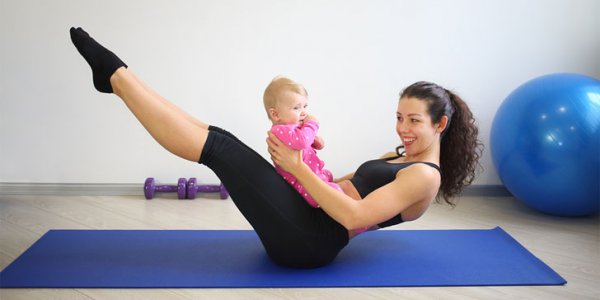







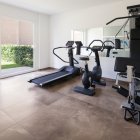


 Highlight the Best Facets of Your Incomparable Beauty: Discover the Best Face Highlighter Currently Available in India and Everything You Need to Know About Using Face Highlighters for Maximum Effect (2023)
Highlight the Best Facets of Your Incomparable Beauty: Discover the Best Face Highlighter Currently Available in India and Everything You Need to Know About Using Face Highlighters for Maximum Effect (2023)
 Forget the Blemishes and Get that Picture Perfect Flawless Radiance on Your Face: Check out the Best Foundations for Oily Skin Currently Available in India and Everything You Need to Know About Makeup Foundations (2023)
Forget the Blemishes and Get that Picture Perfect Flawless Radiance on Your Face: Check out the Best Foundations for Oily Skin Currently Available in India and Everything You Need to Know About Makeup Foundations (2023)
 Make Your Presence Felt Wherever You Go: Discover the Best Perfumes Under 2000 for Both Men and Women to Announce Your Arrival and Make Any Occasion Memorable (2023)
Make Your Presence Felt Wherever You Go: Discover the Best Perfumes Under 2000 for Both Men and Women to Announce Your Arrival and Make Any Occasion Memorable (2023)
 Protect Your Oily Skin from the Harmful Rays of the Sun: Discover the Best Gel Based Sunscreens for Oily Skin and Everything You Need to Know Before Buying One (2023)
Protect Your Oily Skin from the Harmful Rays of the Sun: Discover the Best Gel Based Sunscreens for Oily Skin and Everything You Need to Know Before Buying One (2023)
 Minor Blemishes and Wrinkles Affecting Your Confidence? Check out the Best BB Creams to Conceal Your Worries and Nourish Your Skin to Restore the Healthy, Radiant and Glowing Complexion Back Again (2023)
Minor Blemishes and Wrinkles Affecting Your Confidence? Check out the Best BB Creams to Conceal Your Worries and Nourish Your Skin to Restore the Healthy, Radiant and Glowing Complexion Back Again (2023)
